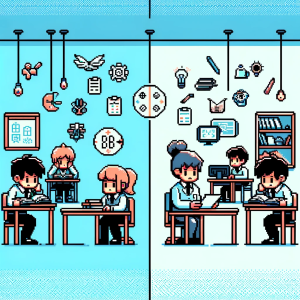
When a Crisis Walks Into Class
The bell rings, and Ms. Alvarez glances up to see a fifth-grader sobbing quietly at her desk. It’s the third meltdown this week. The counselor is off-campus, the nurse is double-booked, and the principal just emailed about standardized testing prep. Everyone cares. Everyone’s exhausted. And no one’s sure who’s supposed to step in.
This is not a failure of compassion—it’s a failure of coordination.
Across the country, schools have become the largest provider of mental health care for kids, often outpacing clinics, hospitals, and even community agencies. Yet most educators and counselors will tell you: it feels like flying a plane while still building the wings.
Schools: America’s Mental Health Hubs (Whether We Planned It or Not)
More than half of U.S. schools now provide some kind of mental health diagnostic or counseling service. On paper, that’s progress. In practice, it often looks like this:
- A teacher notices a student’s anxiety but doesn’t know who to tell.
- The social worker covers lunch duty instead of counseling sessions.
- The outside therapist can’t attend school meetings because they’re only paid for “billable” hours.
These aren’t isolated headaches—they’re systemic cracks. And those cracks are where kids fall through.
Recent research led by a team at the University of Pennsylvania took a hard look at this reality. They found that while schools are heroically stepping up to meet students’ emotional needs, their mental health systems are often disjointed, underfunded, and confusingly organized.
Teachers, principals, counselors, and community clinicians all want the same thing—healthier kids—but they speak different professional languages, answer to different bosses, and rarely share the same playbook.
So researchers asked a bold question: What if we stopped relying on goodwill and started relying on teamwork science?
Borrowing a Page from Hospitals: TeamSTEPPS for Schools
In hospitals, when communication fails, people can die. That’s why the Agency for Healthcare Research and Quality created TeamSTEPPS—a program that teaches healthcare teams how to communicate clearly, support one another, and respond fast under pressure.
The Penn researchers wondered: Could that same system save time, stress, and maybe even lives in schools?
They partnered with three school districts serving mostly low-income, racially diverse students. The team started with listening, not lecturing—interviewing teachers, counselors, social workers, and administrators about what was and wasn’t working in their mental health systems.
The stories were painfully familiar:
- “We never know who’s supposed to handle a crisis.”
- “Our meetings are all spreadsheets and no solutions.”
- “We spend more time chasing signatures than helping kids.”
From those conversations, the researchers adapted TeamSTEPPS to the school environment—translating hospital teamwork into classroom reality.
That meant swapping out “patients” for “students,” revising examples, and adding tools schools could actually use—like shared agendas, clear referral maps, and quick “check-backs” between teachers and counselors after an intervention.
What They Found: Clarity Is Healing
Early results are striking. When schools practiced structured teamwork—defining who does what, when, and how—teachers felt less alone, counselors reported fewer bottlenecks, and administrators finally had a clearer view of where support was breaking down.
It turns out that the biggest driver of burnout in school mental health isn’t the trauma—it’s the teamwork gap.
One counselor described it this way:
“It’s not the kids that wear me out. It’s feeling like we’re all rowing in different directions.”
By giving teams shared language and a structure for collaboration, TeamSTEPPS doesn’t just reduce chaos—it creates capacity. Meetings become more purposeful, roles more defined, and everyone spends more time on what matters: the kids.
Why This Matters Right Now
The pandemic didn’t just strain students—it shredded the mental health safety nets schools had been slowly building. Anxiety, depression, and behavioral challenges have skyrocketed. The CDC estimates that 44% of teens now report persistent feelings of sadness or hopelessness.
Teachers see it daily. Parents feel it deeply. But most schools are still using systems designed decades ago, when “mental health” meant a single counselor in a tiny office down the hall.
Team science—like the TeamSTEPPS approach—offers something we rarely talk about in education: a blueprint for collaboration.
It’s not a new program to buy or a magic app to download. It’s a way to make the people you already have work better together. And for schools stretched to the limit, that might be the biggest mental health intervention of all.
From Research to Real Life: How Schools Can Start Today
You don’t need a five-year research grant to begin improving teamwork in your school. Here are three steps any school community can take:
1. Clarify Roles Before Crises Happen: Hold a short “mental health mapping” session. Who’s the first contact for a student in distress? When does the counselor get involved? How are parents notified? Writing it down turns chaos into coordination.
2. Make Meetings Meaningful: Replace endless updates with clear agendas: What’s our goal? Who’s responsible? What’s next? End each meeting with two action steps and a check-back plan.
3. Train for Communication, Not Just Compliance: Teachers and staff don’t need another lecture—they need practical scripts. Phrases like “I need clarity on who’s leading this” or “Let’s check back after lunch” can make collaboration automatic, not awkward.
Small shifts like these can make a huge difference. When adults model clear communication and mutual support, kids notice—and start doing the same.
The Bigger Picture: Schools as Healing Systems
What makes this story powerful isn’t just the data—it’s the philosophy behind it.
When schools see themselves not just as academic institutions but as healing systems, every interaction changes. A hallway chat becomes a chance to check in. A team meeting becomes a moment of alignment. A student meltdown becomes a shared mission, not a teacher’s burden.
Team science reminds us that mental health support isn’t one person’s job—it’s everyone’s practice.
A Practical Takeaway
If your school is struggling with mental health overload, don’t start by hiring more people you can’t afford. Start by strengthening the teams you already have.
Ask:
- Do we know who’s responsible for what?
- Are we using meeting time to solve or to survive?
- Do we trust each other enough to ask for help?
The answers to those questions might tell you more about your school’s mental health capacity than any new screening tool ever could.
Let’s Talk About It 💬
What’s the biggest mental health challenge you see in schools today?
How can schools better support staff who carry students’ emotional burdens?
What teamwork trick (big or small) has changed how you handle student crises?
Share your thoughts below or join the conversation on social media using #SchoolMindShift—because transforming student mental health starts with transforming how we work together.



